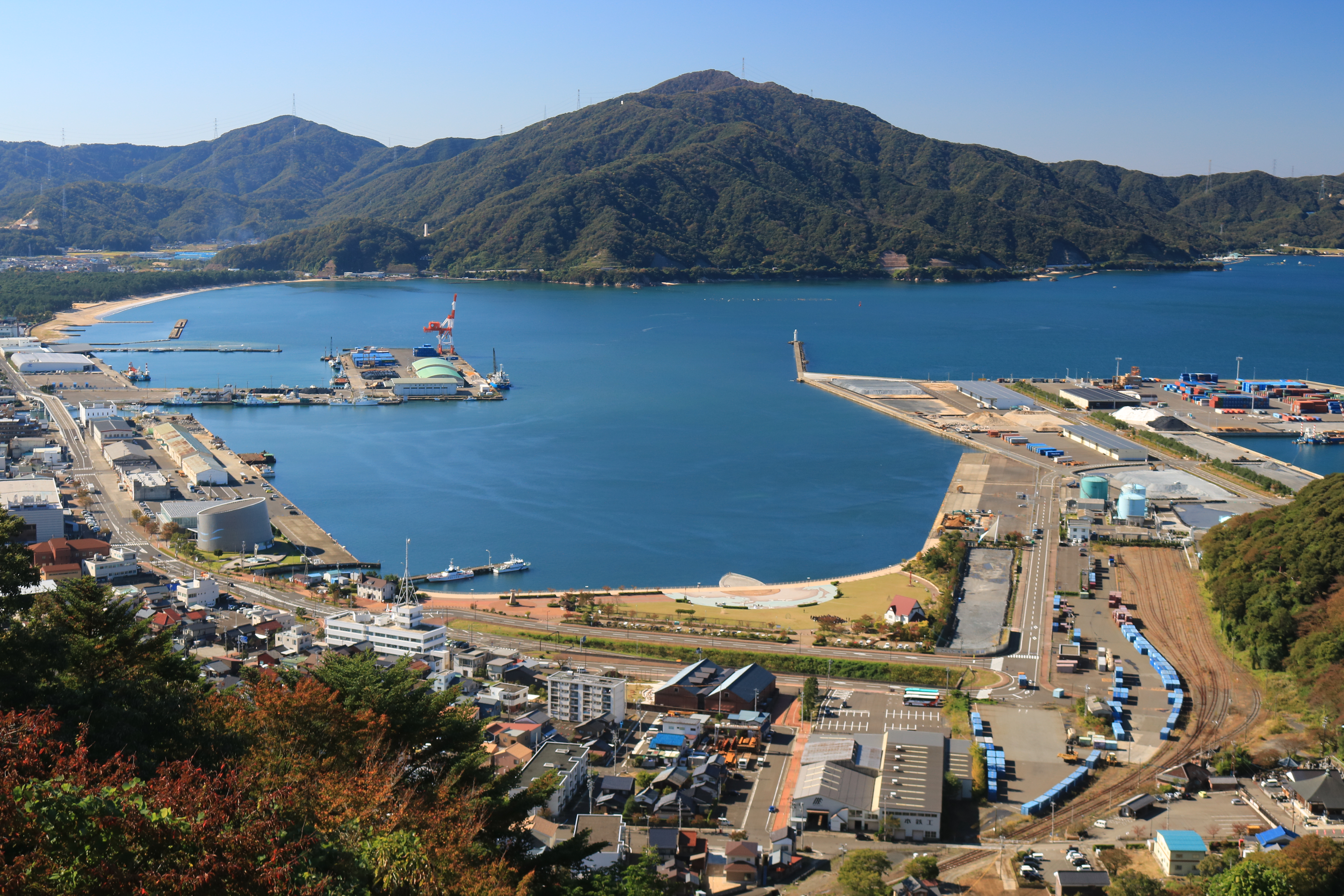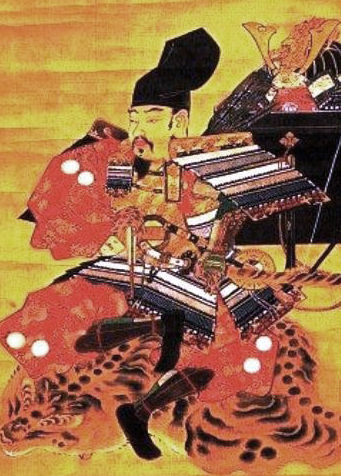|
Kanegasaki-gū
is a Shinto shrine located in the city of Tsuruga, Fukui, Japan. In the former Modern system of ranked Shinto Shrines, it was an imperial shrine of the second rank (官幣中社, '' Kanpei-chūsha''). Its main festival is held annually on May 6. It was founded in 1890 on the site of Kanagasaki Castle, where during the Siege of Kanegasaki (1337) a major battle was fought between the forces of Ashikaga Takauji and forces loyal to the Southern Court of Emperor Go-Daigo, led by Nitta Yoshiaki, the son of Nitta Yoshisada and the imperial princes Prince Takanaga and Prince Tsunenaga. The forces of the Northern Court prevailed, and Nitta Yoshiaki and Prince Takanaga took their own lives to avoid the disgrace of capture, whereas Prince Tsunenaga managed to escape but was captured and killed shortly afterwards. It is one of the Fifteen Shrines of the Kenmu Restoration, built by the Meiji government to commemorate the events of the Nanboku-chō period and to promote loyalty to the Im ... [...More Info...] [...Related Items...] OR: [Wikipedia] [Google] [Baidu] |
Prince Tsunenaga
(1324 – May 5, 1338) was one of the sons of Japanese Emperor Go-Daigo. He became involved in the Nanboku-chō wars between the true Imperial line and the Ashikaga clan. In 1336, Tsunenaga was sent along with his brother Takanaga to be escorted by Nitta Yoshisada to Echizen Province where, it was hoped, they could escape the attacks of the Ashikaga. According to the epic ''Taiheiki The (Chronicle of Great Peace) is a medieval Japanese historical epic (see '' gunki monogatari'') written in the late 14th century and covers the period from 1319 to 1367. It deals primarily with the Nanboku-chō, the period of war between the ...'', Tsunenaga was secretly made heir-apparent before he left, but no other documents confirm this. In fact, in November of that year, his brother Narinaga was officially named Crown Prince. Fleeing the Ashikaga, Nitta brought the Princes away from Yoshino, where the Southern Court of Go-Daigo was based, towards Tsuruga in Echizen. They eventual ... [...More Info...] [...Related Items...] OR: [Wikipedia] [Google] [Baidu] |
Tsuruga, Fukui
is a Cities of Japan, city located in Fukui Prefecture, Japan. , the city had an estimated population of 66,123 in 28,604 households and the population density of 260 persons per km2. The total area of the city was . Geography Tsuruga is located in central Fukui Prefecture, bordered by Shiga Prefecture to the south and Wakasa Bay of the Sea of Japan to the north. Tsuruga lies some 50 km south of Fukui, Fukui, Fukui, 90 km northwest of Nagoya, 40 km northwest of Maibara, Shiga, Maibara, 115 km northeast of Osaka, 75 km northeast of Kyoto, and 65 km east of Maizuru, Kyoto, Maizuru. Among cities on the Sea of Japan coast, Tsuruga is the nearest city to the Pacific Ocean. The distance between Tsuruga and Nagoya is only 115 km. Tsuruga and Nagoya are historically close to Shiga Prefecture and Kyoto. Neighboring municipalities *Fukui Prefecture **Echizen, Fukui (town), Echizen **Mihama, Fukui, Mihama *Shiga Prefecture **Nagahama, Shiga, Nagaha ... [...More Info...] [...Related Items...] OR: [Wikipedia] [Google] [Baidu] |
Beppyo Shrines
A ''Beppyō'' shrine () is a category of Shinto shrine, as defined by the Association of Shinto Shrines. They are considered to be remarkable in some way, and thus given a higher status than other shrines. It is considered the successor to the more detailed modern system of ranked Shinto shrines. Overview With the abolition of the state administration of shrines on February 2, 1946, the official system of shrine rankings (modern shrine rankings system) was abolished, and another system was established in 1948 to replace it. After the abolition of the shrine rating system, all shrines were considered to be on an equal footing (except for Ise Shrine). However, since it would be inconvenient to treat the former official national shrines and some of the larger shrines in the same way as ordinary shrines with regard to the advancement and retirement of Shinto priests, the "Regulations Concerning the Advancement and Retirement of Officials and Employees" stipulate that special trea ... [...More Info...] [...Related Items...] OR: [Wikipedia] [Google] [Baidu] |
Fifteen Shrines Of The Kenmu Restoration
image:Minatogawa-jinja shinmon.jpg, Minatogawa Shrine The Fifteen Shrines of the Kenmu Restoration (建武中興十五社, ''Kenmu chūko jūgosha'') are a group of Shinto shrines dedicated to individuals and events of the Kenmu Restoration. References * Takashi Fujitani, ''Splendid Monarchy: Power and Pageantry in Modern Japan'' (Berkeley: University of California Press, 1996). * John S. Brownlee, ''Japanese Historians and the National Myths, 1600-1945: The Age of the Gods'' (UBC Press, 1999). {{DEFAULTSORT:Fifteen Shrines of the Kenmu Restoration Historic Sites of Japan Shinto shrines in Japan, Japanese culture-related lists Lists of Shinto shrines Fifteen Shrines of the Kenmu Restoration ... [...More Info...] [...Related Items...] OR: [Wikipedia] [Google] [Baidu] |
Prince Takanaga
was the second son of Emperor Go-Daigo of Japan. His mother was the poet Tameko. He fought for his father in the Nanboku-chō Wars. Since the characters used to write "Takanaga" can also be read as "Takayoshi", the prince is sometimes known by that name as well. Appointed ''Seitō Shōgun'' (Commander-in-Chief of the Defense of the East) in November 1335, he was commissioned along with Nitta Yoshisada to destroy the Northern Court leaders Ashikaga Takauji and Ashikaga Tadayoshi. He fought a number of battles alongside Nitta and led his own force in besieging Kyoto in 1336. In 1336, he was sent along with his brother Tsunenaga to be escorted by Nitta Yoshisada to Echizen Province was a Provinces of Japan, province of Japan in the area that is today the northern portion of Fukui Prefecture in the Hokuriku region of Japan. Echizen bordered on Kaga Province, Kaga, Wakasa Province, Wakasa, Hida Province, Hida, and Ōmi Provin ... where, it was hoped, they could escape the at ... [...More Info...] [...Related Items...] OR: [Wikipedia] [Google] [Baidu] |
Shinto
, also called Shintoism, is a religion originating in Japan. Classified as an East Asian religions, East Asian religion by Religious studies, scholars of religion, it is often regarded by its practitioners as Japan's indigenous religion and as a nature religion. Scholars sometimes call its practitioners ''Shintoists'', although adherents rarely use that term themselves. With no central authority in control of Shinto, there is much diversity of belief and practice evident among practitioners. A polytheism, polytheistic and animism, animistic religion, Shinto revolves around supernatural entities called the (神). The are believed to inhabit all things, including forces of nature and prominent landscape locations. The are worshipped at household shrines, family shrines, and Shinto shrine, ''jinja'' public shrines. The latter are staffed by priests, known as , who oversee offerings of food and drink to the specific enshrined at that location. This is done to cultivate harmony ... [...More Info...] [...Related Items...] OR: [Wikipedia] [Google] [Baidu] |
Nitta Yoshisada
also known as Minamoto no Yoshisada was a samurai lord of the Nanboku-chō period Japan. He was the head of the Nitta clan in the early fourteenth century, and supported the Southern Court of Emperor Go-Daigo in the Nanboku-chō period. He famously marched on Kamakura, besieging and capturing it from the Hōjō clan in 1333. Later, he fought the Ashikaga brothers on the Emperor's behalf in a see-saw campaign which saw the capital change hands several times. After a peaceful compromise was agreed, Yoshisada was entrusted with two royal princes. At the siege of Kanegasaki (1337), both princes were killed, along with Yoshisada's son, although Yoshisada was able to escape. He committed seppuku when his horse was killed at the siege of Kuromaru. Early life Yoshisada was born in 1301, the eldest son of Nitta Tomouji. He succeeded his father and became the lord of Nitta Manor in Kōzuke Province in 1317. At this time, he also became the head of the Nitta clan. Yoshisada courted a da ... [...More Info...] [...Related Items...] OR: [Wikipedia] [Google] [Baidu] |
Shinto Shrines In Fukui Prefecture
, also called Shintoism, is a religion originating in Japan. Classified as an East Asian religion by scholars of religion, it is often regarded by its practitioners as Japan's indigenous religion and as a nature religion. Scholars sometimes call its practitioners ''Shintoists'', although adherents rarely use that term themselves. With no central authority in control of Shinto, there is much diversity of belief and practice evident among practitioners. A polytheistic and animistic religion, Shinto revolves around supernatural entities called the (神). The are believed to inhabit all things, including forces of nature and prominent landscape locations. The are worshipped at household shrines, family shrines, and ''jinja'' public shrines. The latter are staffed by priests, known as , who oversee offerings of food and drink to the specific enshrined at that location. This is done to cultivate harmony between humans and and to solicit the latter's blessing. Other common ri ... [...More Info...] [...Related Items...] OR: [Wikipedia] [Google] [Baidu] |





